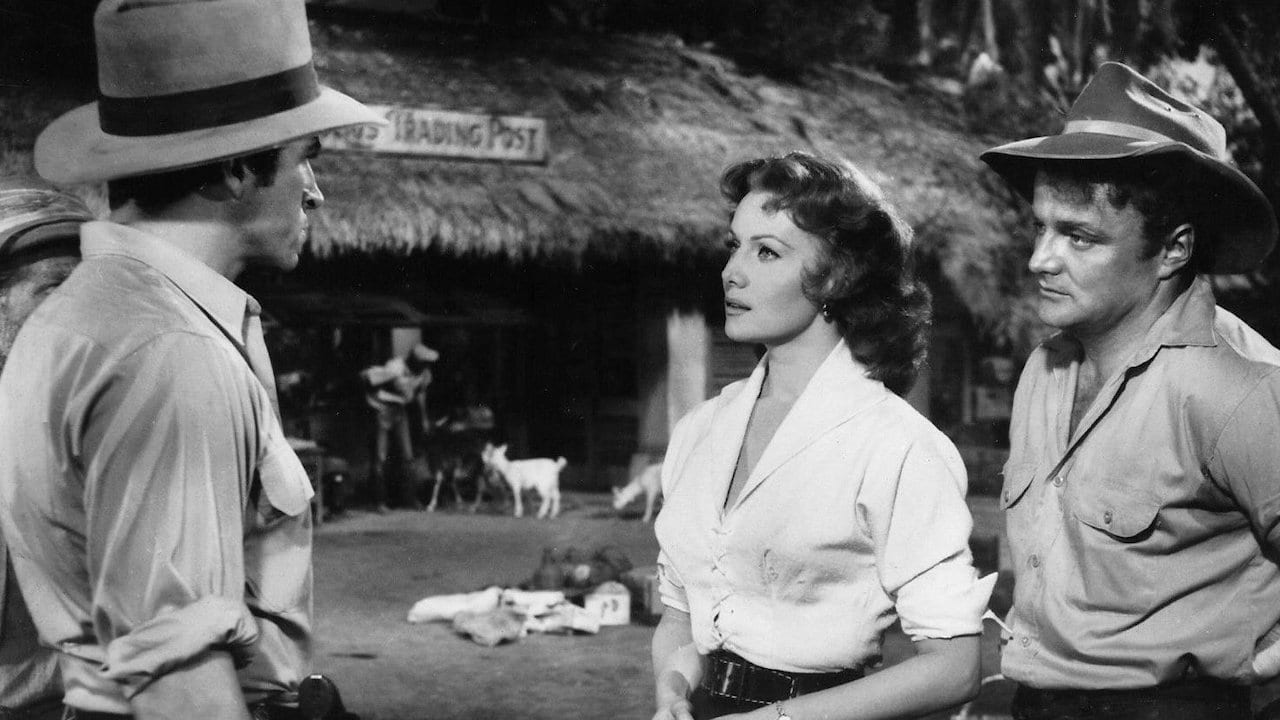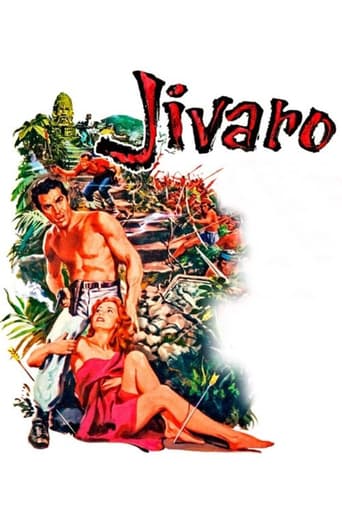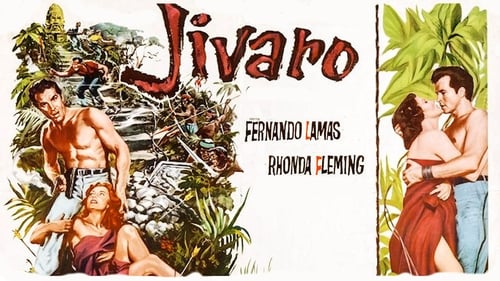




An unexpected masterpiece
it is the rare 'crazy' movie that actually has something to say.
View MoreA film of deceptively outspoken contemporary relevance, this is cinema at its most alert, alarming and alive.
View MoreA movie that not only functions as a solid scarefest but a razor-sharp satire.
View MoreA Pine-Thomas film, produced and released by Paramount Pictures. Copyright 1 February 1954 (in notice: 1953) by Paramount Pictures Corp. New York opening (flat) at the Palace: 12 February 1954. U.S. release: February 1954. U.K. release on the lower half of a double bill: April 1954. Australian release (flat): 11 March 1955. Sydney opening on a double bill at the Victory. 8,228 feet. 91 minutes. U.K. and Australian release title: LOST TREASURE OF THE AMAZON.SYNOPSIS: A cool but not overbright beauty comes looking for her fiancé who is lost in the Amazon jungle.NOTES: Paramount's last 3-D feature played flat in most situations, though it did have some 3-D showings in Britain and the U.S.A.COMMENT: Not exactly one of the Most Boring films ever made, but it certainly runs the Top of the Tedious pretty close. The swaggering Fernando Lamas, one of the most egotistical yet least personable of Hollywood's minor stars, is here joined by that regular Pine-Thomas lesser (if luscious) light, Rhonda Fleming in a cutdown variation of King Solomon's Mines. Even in its 3-D version, the film comes across as a lackluster, snail-paced affair. It doesn't help that there are few 3-D effects - a shrunken head is thrust at the camera and a chair or two is thrown into the lens - and that the 2nd unit work is so grainy it was obviously blown up from 16mm. Many scenes like those with long-winded Lamas and frippery Fleming on the boat are completely superfluous and unnecessary. One wonders why the editor left them in, especially as at 91 or 93 minutes the film is too long for a "B" feature anyway. The support players come across as a trifle more interesting than the pedestrian principals, though only villainous Brian Keith gets much in the way of a dramatic opportunity. Cult hero, Lon Chaney, is confined to just one scene - true, it's one of the most exciting in the movie - near the beginning, while Rita Moreno has virtually no part at all. Ludwig's direction manages the difficult feat of bringing a dull script to an even less animated life. Production values are strictly "B".In short, a waste of time. Even the Amazonian locations look synthetic. Although mildly stimulated by the opening scenes, desperate action fans will have deserted the movie long before the long-promised jivaro-attack climax. Maybe rabid followers of the loquacious Lamas and/or that equally dreary, equally unconvincing heroine, Miss Rhonda Fleming, a so meticulously groomed fashion clotheshorse of the studio backlot jungle - maybe fans of these two spoilers will get something out of Jivaro. Maybe.
View MoreFernando Lamas and Rhonda Fleming starred in this Pine-Thomas Production set in the Amazon tributary source country in Brazil. Jivaro is not about the Jivaro Indians who are the native inhabitants, but rather about the danger they are to anyone else. Clearly they are not a people to be messed with especially on their own turf.It's on his turf that Lamas trades with the Jivaro, at his trading post on one of the Amazon tributaries. Lamas also owns a boat that makes The African Queen look like the Queen Mary. And on it he brings a passenger in the form of shapely Rhonda Fleming who has come unannounced to the area seeking her fiancé Richard Denning who 'owns' a big plantation. Denning barely owns the clothes on his person. He's a dissolute drunk who came to the area seeking fame and fortune and he's still seeking it in the form of ancient Inca treasure in some lost city deep in the middle of Jivaro country. He's writing lies to Rhonda and taking up with native girl Rita Moreno.And Denning has up and gone into the Jivaro country before Fleming arrived. Fleming also has Lamas and Brian Keith both panting hot and heavy after her, Keith a lot more crudely.Jivaro is a competent well made action film with a dash of romantic pentagon in the mix. The credits don't list where Jivaro was shot and I doubt Paramount spent the money to go to the Amazon head water country. But Pine-Thomas did a very good job in recreating it, they were good that way, made competent pictures that looked good and never strained Paramount's budget.I'd give this one a look.
View MoreI saw this film many years ago on American Movie Classics, when it was good and is not the AMC of today which has commercials and interrupts the film at odd times. two other reviewers have touched on the 3D of the film, and also the environmental aspects of the film and the Indian tribe that the film is named after. However, what really struck me about the film, is how different the film is in its politics of the time. American films up to this time always portrayed Americans as the good guys, but what I remember here was that the Americans led by Brian Keith seemed to be the bad guys in the film.the good guys are led by Fernando Lamas, a Latin American. Lamas was suited for the role, born in Argentina, it was great that they did not rely on some American actor to play the lead. Certainly, I think the studio of the film (Universal), may have been responding to criticism earlier from Latin American countries on how they were portrayed in previous films, and I suspect that the Latin American market was looked upon as a possible future source of income for their films.The lead is played by Rhonda Flemming, and she is quite attractive in this film. If I recall correctly, the Lamas character will get the American woman in the end, the American bad guys are defeated in the end.I doubt that such as casting or result would have been done some 20 years earlier. Lamas, sadly, while well known did not have a great career, Jivaro shows however that maybe it could have been better.I give the film 7 out of 10, because I feel that it is an interesting film, and quite unusual for the time. the irony also is the director, Ludwig, and not so long before directed John Wayne in the overly patriotic Big Jim McClean. Did he see the irony of doing this film?
View MoreThis is Mrs. Sheila Beers, writing with the permission of Barney Beers. I saw this movie on a black and white television as a child about 45-50 years ago, and I only can imagine how much better it is in color. However, through missionaries I had heard of the fierce Jivaro Indians, and I found "Jivaro" a compelling story. I still believe the film is much more than an adventure-romance story and that it has more to offer than viewers of the 1950s realized. Now that there is so much interest in saving the Brazilian rain forest, I believe "Jivaro" is even more relevant today. The theme is timeless, being the clash between primitive cultures and the modern world. Since New World exploration in the 1500s, the Jivaro Indians of South America were known as headhunters and cannibals, but a lesser known fact is that South America's richest gold deposits were (and still are) located in Jivaro territory. Although Brazil was settled by the Portuguese, the Spanish who settled Peru, Ecuador, and other countries that border Brazil, soon learned of the Jivaro's treasure and wanted the gold to defeat Protestantism in Europe. In spite of their primitive nature, the Jivaros (like other primitive tribes of South America) knew how to mine gold and refine it. Through their reputation as fierce headhunters and cannibals, the Jivaros protected their wealth. In the late 1500s the Spanish dared to build the city of Logrono, population 25,000, on the border of Brazil. The city provided housing for miners, settler families, and administrators who wanted to send the gold to Spain. Wanting to deflect the invaders, the Jivaros, armed only with spears and possibly blow guns and clubs, wiped out the city in 1599. They killed everyone but the young women they could assimilate into their tribe for breeding. The city, built mostly of wood, was burned to the ground and mostly absorbed by the jungle. For centuries afterward the Jivaros killed any Europeans or Americans who encroached on their territory. When the Jivaros eventually were Christianized in the late 20th century, missionaries noted some members of the tribe had lighter complexions and more body hair, attesting to their descent from the Spanish women taken from Logrono. Because of this fascinating piece of Brazilian history, I would like to see "Jivaro" made available on DVD. By seeing the movie, people could learn more about South Americam cultures and relate the story to current issues about the rain forest.
View More